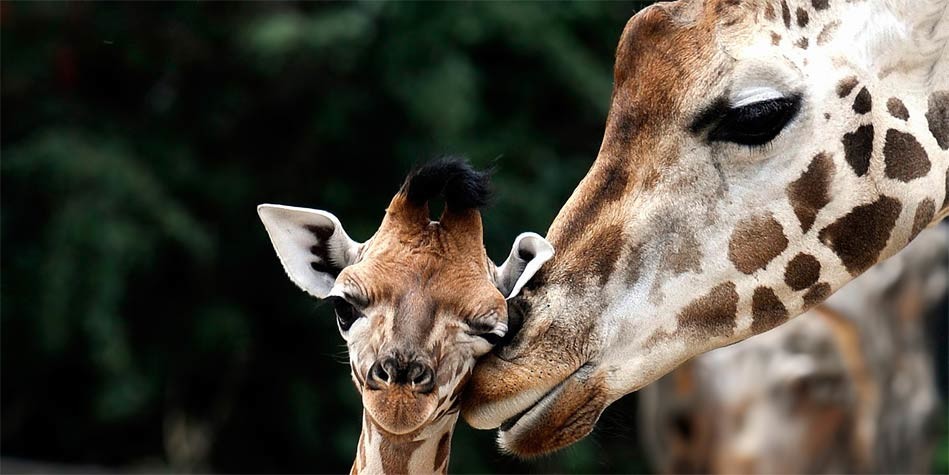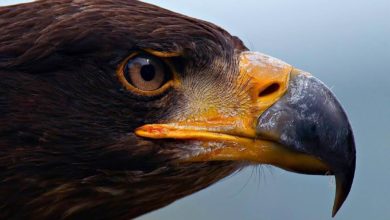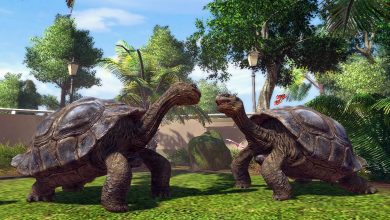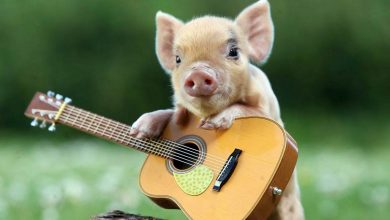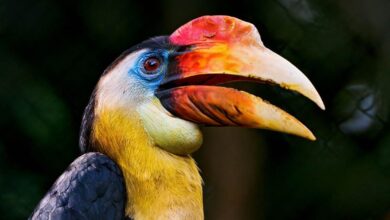Giraffe (Giraffa camelopardalis) – the tallest living animal
The giraffe – 6 meters of height, 2 tons of weight – this is the tallest animal in the world.
The giraffe is one of the most fascinating creatures and also the tallest of all terrestrial animals. You have certainly wondered how tall giraffes are, how long they live, and maybe, how big their hearts are, haven’t you?
Do you know what is their closest living relative and why do they have such long necks? We hope that we can answer these and many more questions, that you haven’t even asked, in this article. Thanks to that, you will know more about the tallest animal on Earth.
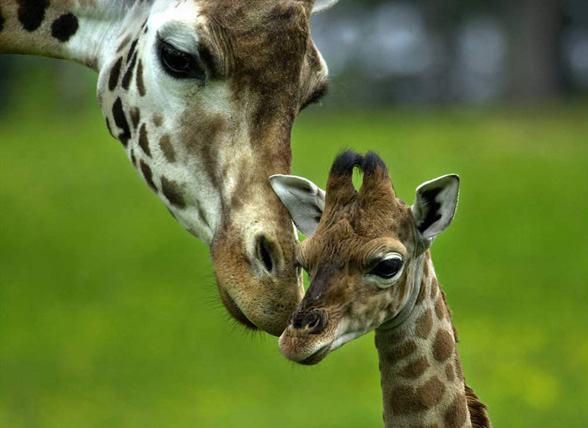
Name
The Latin name of the giraffe originates from an old belief that the giraffe is a hybrid, a crossbred between the camel (Camelus) and leopard (Panthera pardus).
Classification
- Kingdom: Animalia
- Class: Mammalia
- Order: Artiodactyla
- Family: Giraffidae
- Genus: Giraffa
- Species: Giraffa camelopardalis
We can distinguish 9 subspecies of the giraffe.
Lion killers…
The giraffe is the tallest representative of modern-day animals. Thanks to its long neck, it can notice an approaching predator just in time. Although giraffes are not aggressive – they sometimes kill lions…
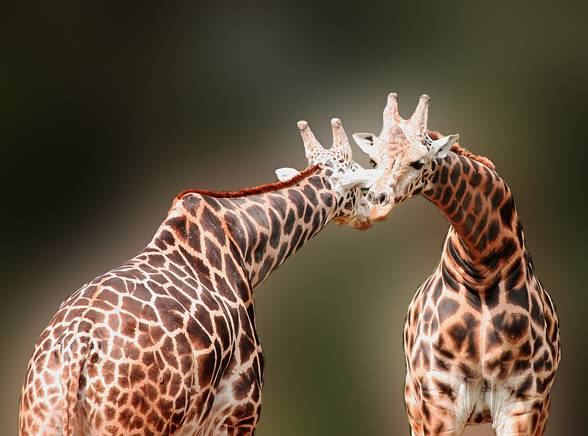
Occurrence
Giraffes live on African savannahs south to Sahara. They live in small herds of 40-70 individuals. They feed mostly on leaves and tree buds, mainly of Acacia trees.
Incredibly cautious
The giraffe is an incredibly cautious animal. It has perfectly developed sight and hearing. Thanks to its extraordinarily long neck, it can observe large areas and notice an approaching predator in time.
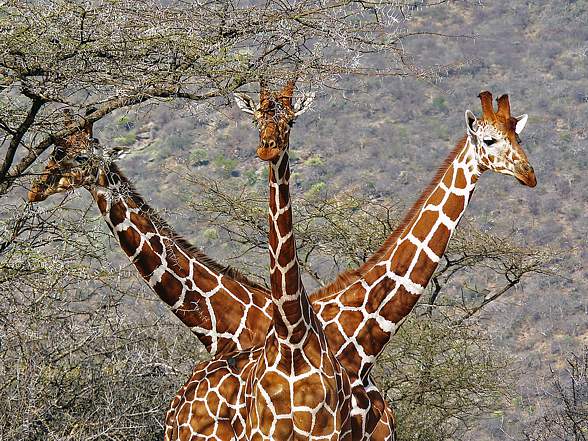
Threats
From time to time, an adult giraffe is attacked by a leopard, but the lion is the only carnivore that stands a chance of defeating a healthy giraffe. The most reliable form of defense for the giraffe is escape, but in exceptional situations it can defend itself from a predator with kicks – there have been cases when such a kick killed an adult lion.
Giraffes’ duels
The horn-like structures on the head, covered with skin, are the characteristic feature of giraffes, and there can be 2-5 of them, depending on the species. Males use them in fights, when the dominant individuals emerge. During these fights, the animals stand beside each other and hit each other with their heads and… they rub their necks against each other. The duels are never bloody – short and rounded horns are not dangerous. After a duel, the defeated animal walks away, not being bothered by the winner.
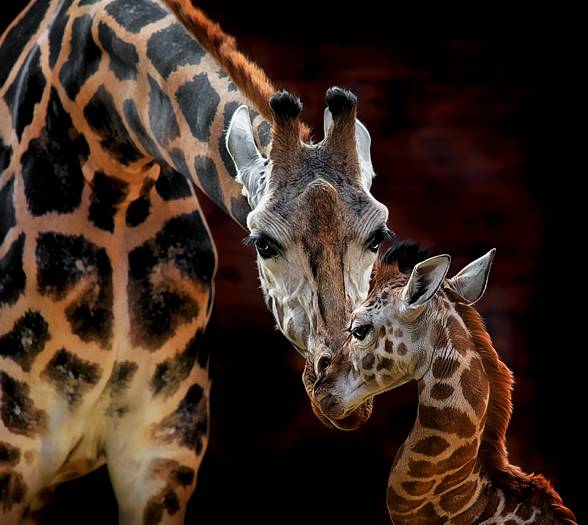
Young giraffe
After birth, the giraffe is as tall as an adult human (1.8-2 meters) (5.90 to 6.56 ft). It weighs about 50 – 55 kg (110.23 – 121.25 lb). It can run within several hours after birth.
Population
Giraffes are not endangered. Their population consists of around 110-150 thousand individuals.
- Kenya – 45,000
- Tanzania – 30,000
- Botswana – 12,000
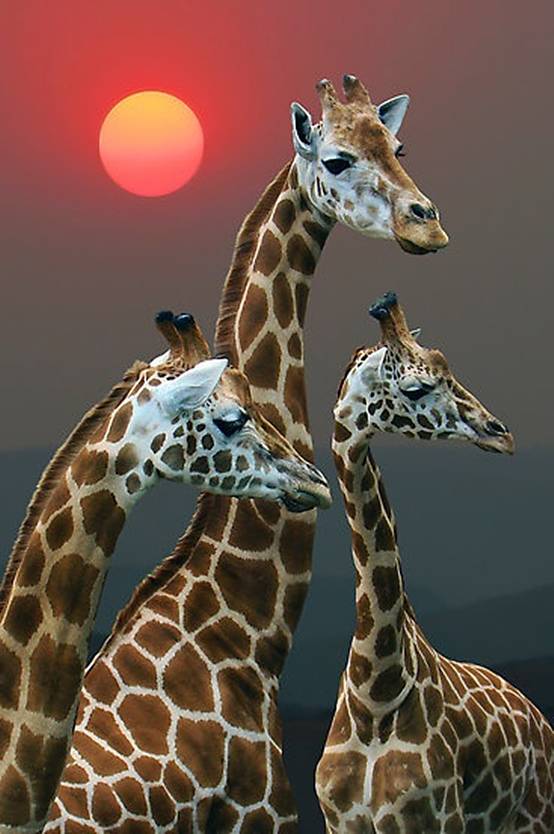
Information / measurements
Giraffe (Giraffa camelopardalis)
- Height to the top of the head: to 6 m (19.68 ft) (record 5.87 m [19.25 ft])
- Neck length: 2 m (6.56 ft)
- Body length: to 4 m (13.12 ft)
- Weight: males 1,600 kg (3527 lb), record 2,000 kg (4409 lb), females 830-850 kg (1829.83- 1873.92 lb)
- Heart: 11 kg (24.25 lb) of weight and 60 cm (23.62 in) of length; 150 beats per minute
- Tongue: 45-50 cm long (17.71-19.68 in)
- Lifespan: 20-30 years
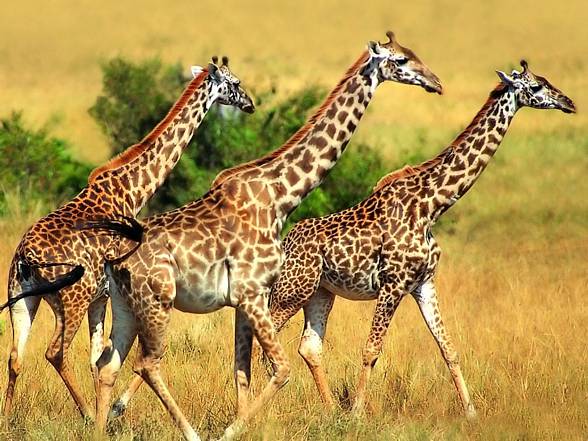
Giraffe – interesting facts. Do you know….
- White individuals can be found among giraffes.
- The animal can run with the speed of to 50 km/h (31 mph) at short distances.
- The forelegs of the giraffe are longer than the hind legs.
- The tongue is very long and it can reach 50 cm (19.68 in) of length.
- Males feed in a different way than females. Males reach to the twigs that are at the top of a tree, and females feed on twigs of lower bushes.
- Despite having an incredibly long neck, the giraffe has the same number of vertebrae (7) as other mammals. They are just longer.
- The giraffe’s spine consists of 24 vertebrae.
- After birth, the giraffe is from 1.8-2 m (5.90 to 6.56 ft) tall and weighs 50-55 kg (110.23 – 121.25 lb).
- There are no giraffes that have identical pattern on their bodies, similarly to humans and their fingerprints.
- The giraffe’s hooves are as big as a dinner plate – with the diameter of 30 cm (11.81 in).
- The tongue of the giraffe is purplish-blue, and it is 45-50 cm (17.71-19.68 in) long.
- Ossicones are horn-like bumps on the giraffe’s head. They also occur in male okapis.
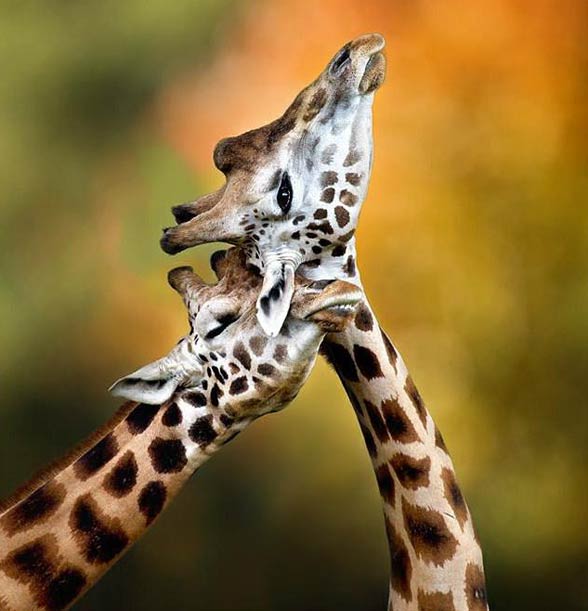
- Both the male and the female have “horns” (ossicones) right after birth. Ossicones lie flat and they are not connected to the skull, to prevent the giraffe from injuries at the moment of birth. The “horns” connect with the skull later.
- Only giraffes and okapis have real ossicones (contrary to horns and antlers). The basis from which the deer’s antlers grow is very similar to the ossicone.
- The giraffe is the tallest mammal in the world. Even the newborn giraffe is taller than most people.
- The female giraffe gives birth standing. The young falls on the ground from the altitude of 2 meters (6.56 ft). Within an hour after birth, it can stand up and walk.
- About half of all giraffe calves doesn’t survive the first year.
- The giraffe’s neck, although very long, is too short to reach the ground. Therefore, the giraffe has to awkwardly set its forelegs wide apart or kneel in order to drink water.
- The giraffe drinks water every couple of days. It obtains the majority of water from plants that it feeds on – similarly to the koala or the camel, when they have no opportunity to drink.
- The giraffe’s heart weighs about 11 kg (24.25 lb) and it is the largest heart among all terrestrial animals. Even the elephant’s heart is smaller, but you can read about it in the article about the African elephant.
- The giraffe eats about 34 kg (75 lb) of leaves daily.
- The okapi (Okapia johnstoni) is the closest existing relative of the giraffe.
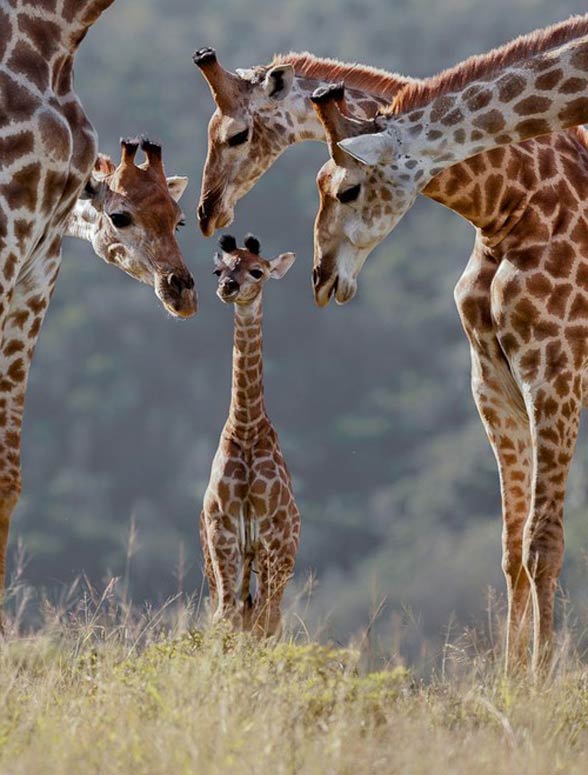
Recommended
- Animals & dinosaurs records
- The fastest animals – Top 100
- The fastest birds – Top 10
- The heaviest dinosaurs – Top 10
- The longest dinosaurs. Sauropods Top 10
- The longest predatory dinosaurs. Theropods Top 10
- The heavies predatory dinosaurs Top 10
- The longest and largest ornithopods
- The longest and largest ceratopsians
- The shortest sauropods
- The smallest dinosaurs – Top 10

